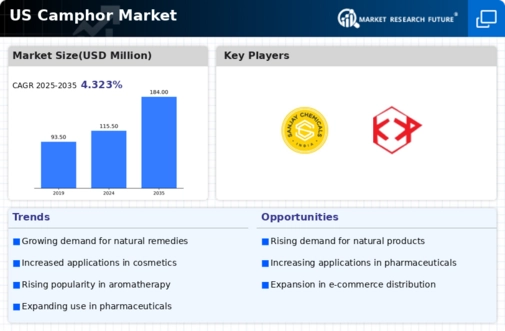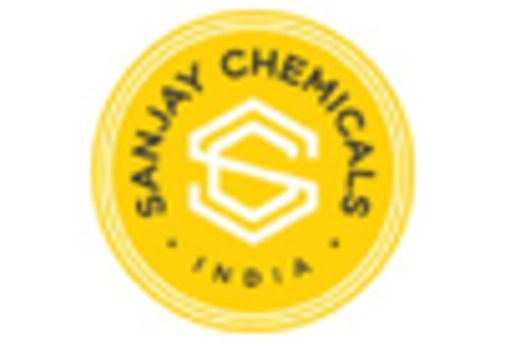The camphor market exhibits a competitive landscape characterized by a blend of traditional practices and modern innovations. Key growth drivers include the rising demand for natural products in pharmaceuticals, cosmetics, and food industries. Major players such as Kanchi Karpooram Limited (India), Mohan Camphor (India), and Hindustan Mint & Agro Products Pvt Ltd (India) are strategically positioned to leverage their extensive manufacturing capabilities and established distribution networks. These companies focus on enhancing product quality and expanding their market reach, which collectively shapes a competitive environment that is moderately fragmented yet dynamic.
In terms of business tactics, companies are increasingly localizing manufacturing to reduce costs and optimize supply chains. The market structure appears to be moderately fragmented, with several players vying for market share. The collective influence of these key players is significant, as they engage in strategic partnerships and collaborations to enhance their operational efficiencies and product offerings.
In October 2025, Kanchi Karpooram Limited (India) announced a partnership with a leading pharmaceutical company to develop a new line of camphor-based medicinal products. This strategic move is likely to enhance Kanchi's product portfolio and strengthen its position in the pharmaceutical sector, tapping into the growing trend of natural remedies. The collaboration may also facilitate access to advanced research and development capabilities, thereby fostering innovation.
In September 2025, Mohan Camphor (India) launched a new eco-friendly camphor product line aimed at the cosmetics market. This initiative reflects a growing consumer preference for sustainable and environmentally friendly products. By aligning its offerings with current market trends, Mohan Camphor is likely to attract a broader customer base and enhance brand loyalty, positioning itself as a leader in sustainable practices within the industry.
In August 2025, Hindustan Mint & Agro Products Pvt Ltd (India) expanded its production capacity by investing in state-of-the-art manufacturing technology. This investment is expected to improve production efficiency and product quality, allowing the company to meet the increasing demand for camphor in various applications. The enhancement of manufacturing capabilities may also provide Hindustan with a competitive edge in pricing and supply reliability.
As of November 2025, current competitive trends indicate a shift towards digitalization, sustainability, and the integration of AI technologies in production processes. Strategic alliances are increasingly shaping the landscape, enabling companies to pool resources and expertise. Looking ahead, competitive differentiation is likely to evolve from traditional price-based competition to a focus on innovation, technological advancements, and supply chain reliability, as companies strive to meet the changing demands of consumers.













Leave a Comment